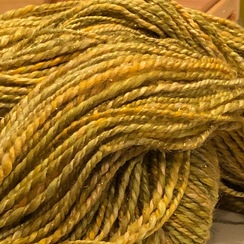General Information
Saturday, August 8, 2015
We are a small alpaca farm on the outskirts of Newton County. Although other livestock such as chickens, pigs, a llama, and a donkey can be found on our farm; our livestock of choice is the alpaca. We currently have a herd of 45 of all colors and sizes that keep us busy, especially during the Fall and Spring show seasons. Due to their small size, gentle nature, and easy care alpacas are the perfect choice of livestock. We breed, sell, and show our animals, but our main source of income comes from their fiber which comes in 23 natural colors and has almost as many uses. Warmer than wool, softer than cashmere, and lighter than cotton, alpaca fiber is gaining in popularity by leaps and bounds around the world.
Once a year, in mid to late spring, we harvest or crop for the year when we have shearing. The fiber is carefully removed from the animal and graded based on its possible use. The prime blanket is usually the area referred to as the “saddle” area and is the best fiber on the animal. Fiber from this area will be either kept carefully intact for sending to fleece shows or bagged for later use by hand spinners or sent to a mill for processing into yarn. The next area to be removed are the haunches, chest, and neck areas. This fleece is usually still of very good quality, but is sometimes lacking in staple length so it will be bagged to be used as roving. The last fiber to be removed is from the belly and legs. This fiber is meant to provide the alpaca with protection from hard surfaces and flies and other biting insects so it is noticeably coarser than the rest and is primarily used in rug yarn. Once the fiber has been removed, each bag is carefully weighed and logged in to a database and then put into one larger bag labeled with the year and the alpaca’s name. Our typical harvest comes in at around 215 pounds. Sale of this fiber and products made from it are our primary source of income from the alpaca business although we do derive some income from stud fees and sales of the animals themselves.
Alpacas are a member of the camelid family along with camels, llamas, vicuñas, and the guanaco. They are native to the mountains of Peru, Chile, and Bolivia where they are found at altitudes ranging from 12,800 to 15,000 feet. These are pack animals by nature and so being must be kept in, at the least, pairs. Although they are known for their soothing “humming” sound, alpacas are known to sound an alarm meant to alert the rest of the herd of impending danger. In many cases the “danger” in question turns out to be the ferocious house cat or alpaca eating red hen, but no matter the cause the high pitched and totally unique sound never fails to get the attention of the rest of the herd. Because these gentle creatures have no other defense against predators they have been known to kick and attempt to stomp an enemy. It is this lack of defense that has given the entire camelid family the bad reputation as spitters. Yes, an alpaca will spit but only in times of great stress or fear.
Alpacas come in two types; the huacaya which have soft fluffy fleece and the suri which have long, twisty locks of fiber. They have a relatively small head, a cleft (split) upper lip, a dental pad on top and long teeth on the bottom in the front of their mouths and both upper and lower teeth for chewing in the back, a long neck, and large, pointed ears. The tail is short and fluffy and the feet have two toes with toenails on the top and pads on the bottom. The average adult alpaca weighs about 120-140 pounds and is 3-3.5 feet tall at the shoulders and will live 15 to 20 years. A young alpaca is called a cria and is born weighing from 13 to 25 pounds after an average gestation of 350 days.
Alpaca are herbivores (plant-eaters). They eat mostly grasses, herbs, and other plant material as well as a pelleted grain produced especially for them. Much like cattle, alpacas are ruminants and have a three-part stomach. They partially chew their food; later, the food is regurgitated as a cud, which the alpaca then chews thoroughly.
Classification:Class Mammalia (mammals), Order Artiodactyla, Suborder Tylopoda, Family Camelidae, Genus Lama, Species L. pacos.
Michael & Melissa Hall
[email protected]
www.mysticmountainalpacas.com
Once a year, in mid to late spring, we harvest or crop for the year when we have shearing. The fiber is carefully removed from the animal and graded based on its possible use. The prime blanket is usually the area referred to as the “saddle” area and is the best fiber on the animal. Fiber from this area will be either kept carefully intact for sending to fleece shows or bagged for later use by hand spinners or sent to a mill for processing into yarn. The next area to be removed are the haunches, chest, and neck areas. This fleece is usually still of very good quality, but is sometimes lacking in staple length so it will be bagged to be used as roving. The last fiber to be removed is from the belly and legs. This fiber is meant to provide the alpaca with protection from hard surfaces and flies and other biting insects so it is noticeably coarser than the rest and is primarily used in rug yarn. Once the fiber has been removed, each bag is carefully weighed and logged in to a database and then put into one larger bag labeled with the year and the alpaca’s name. Our typical harvest comes in at around 215 pounds. Sale of this fiber and products made from it are our primary source of income from the alpaca business although we do derive some income from stud fees and sales of the animals themselves.
Alpacas are a member of the camelid family along with camels, llamas, vicuñas, and the guanaco. They are native to the mountains of Peru, Chile, and Bolivia where they are found at altitudes ranging from 12,800 to 15,000 feet. These are pack animals by nature and so being must be kept in, at the least, pairs. Although they are known for their soothing “humming” sound, alpacas are known to sound an alarm meant to alert the rest of the herd of impending danger. In many cases the “danger” in question turns out to be the ferocious house cat or alpaca eating red hen, but no matter the cause the high pitched and totally unique sound never fails to get the attention of the rest of the herd. Because these gentle creatures have no other defense against predators they have been known to kick and attempt to stomp an enemy. It is this lack of defense that has given the entire camelid family the bad reputation as spitters. Yes, an alpaca will spit but only in times of great stress or fear.
Alpacas come in two types; the huacaya which have soft fluffy fleece and the suri which have long, twisty locks of fiber. They have a relatively small head, a cleft (split) upper lip, a dental pad on top and long teeth on the bottom in the front of their mouths and both upper and lower teeth for chewing in the back, a long neck, and large, pointed ears. The tail is short and fluffy and the feet have two toes with toenails on the top and pads on the bottom. The average adult alpaca weighs about 120-140 pounds and is 3-3.5 feet tall at the shoulders and will live 15 to 20 years. A young alpaca is called a cria and is born weighing from 13 to 25 pounds after an average gestation of 350 days.
Alpaca are herbivores (plant-eaters). They eat mostly grasses, herbs, and other plant material as well as a pelleted grain produced especially for them. Much like cattle, alpacas are ruminants and have a three-part stomach. They partially chew their food; later, the food is regurgitated as a cud, which the alpaca then chews thoroughly.
Classification:Class Mammalia (mammals), Order Artiodactyla, Suborder Tylopoda, Family Camelidae, Genus Lama, Species L. pacos.
Michael & Melissa Hall
[email protected]
www.mysticmountainalpacas.com




